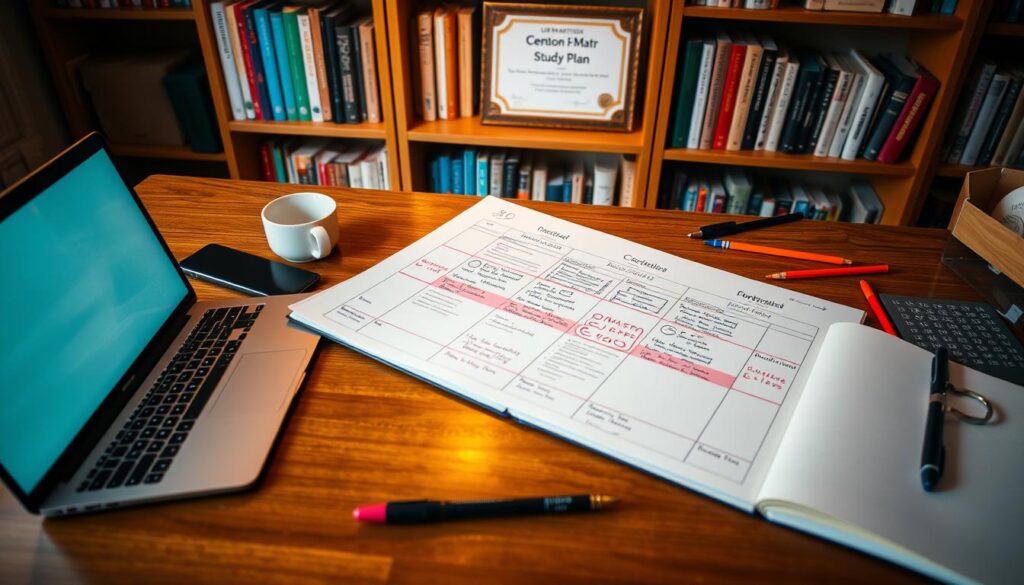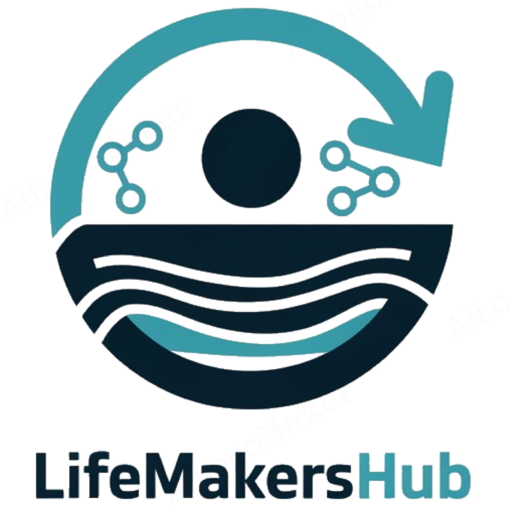Ace Your Exams with These Study Tips
Exams can feel overwhelming, but with the right approach, you can turn stress into success. Many students rely on habits from high school, but these often fall short in college. Effective strategies are essential for long-term retention and better performance.
Planning your time wisely is the first step. Break your material into manageable chunks and review it over several days. This method, known as spaced practice, helps reinforce learning. Attending every class and taking detailed notes also sets a strong foundation.
Active studying is another game-changer. Instead of passively reading, try explaining concepts in simple terms or teaching them to someone else. This technique, called the Feynman Method, ensures you truly understand the material. Don’t forget to ask questions during review sessions to clarify doubts.
By combining organization, active learning, and consistent effort, you can boost your academic performance. Whether you’re struggling or just looking to improve, these strategies can help you level up.
Key Takeaways
- Plan your time and break material into smaller sections.
- Attend every class and take detailed notes.
- Use active studying techniques like the Feynman Method.
- Ask questions to clarify doubts during review sessions.
- Review material over several days for better retention.
Establishing the Foundation for Effective Studying
The leap from high school to college isn’t just about harder material—it’s about smarter strategies. Many students find that their old habits no longer work in this new environment. College demands a more active and engaged approach to learning.
Why High School Habits Don’t Work in College
In high school, success often came from memorizing facts and cramming before tests. College, however, requires deeper understanding and critical thinking. Research by Newport (2006) shows that passive methods like highlighting or rereading notes are less effective in college. Instead, you need to actively engage with the material.
Here’s a quick comparison of high school versus college study environments:
| Aspect | High School | College |
|---|---|---|
| Learning Style | Passive memorization | Active engagement |
| Time Management | Structured schedule | Self-directed planning |
| Note-Taking | Basic summaries | Detailed, organized notes |
The Benefits of Active Learning Techniques
Active learning involves interacting with the material rather than just reading it. Techniques like self-quizzing, teaching concepts to others, and creating diagrams can significantly improve retention. Studies show that students who use these methods perform better on exams.
Here are some practical tips to transition to active learning:
- Take detailed, organized notes during lectures.
- Explain concepts in your own words or teach them to a friend.
- Use flashcards or quizzes to test your understanding.
By adopting these strategies, you’ll not only retain information better but also feel more confident during exams. College is about more than just hard work—it’s about working smart.
Understanding the Study Cycle and Active Learning
Mastering the study cycle can transform how you approach learning and retention. Developed by Frank Christ, this method emphasizes a structured process to enhance comprehension and memory. It’s not just about working harder—it’s about working smarter.
Previewing, Attending, Reviewing, and Checking
The study cycle consists of four key steps: previewing, attending, reviewing, and checking. Previewing involves skimming material before class to get a sense of the topic. Attending class with focus ensures you capture essential details. Reviewing notes soon after class reinforces learning. Finally, checking your understanding through self-quizzing or teaching others solidifies knowledge.
Active learning plays a crucial role in this cycle. Instead of passively reading, engage with the material. Explain concepts in your own words or create diagrams. This approach keeps your mind active and improves retention.
How Distributed Practice Boosts Long-Term Retention
Distributed practice, or spacing out study sessions, is a game-changer for long-term memory. Research by Newport (2006) shows that spreading learning over time is more effective than cramming. This method allows your brain to process and store information more efficiently.
Here’s a comparison of high school and college learning styles:
| Aspect | High School | College |
|---|---|---|
| Learning Style | Passive memorization | Active engagement |
| Time Management | Structured schedule | Self-directed planning |
| Role of Teacher | Guides every step | Encourages independent learning |
Understanding these differences can help you adapt your approach. A teacher in college often acts as a guide rather than a director. This shift requires you to take charge of your learning process.
By incorporating the study cycle and distributed practice, you can achieve better academic results. These strategies empower you to manage your learning more effectively and retain information for the long term.
Effective Study Tips for Academic Success

Achieving academic success starts with a plan tailored to your unique needs and schedule. A personalized approach ensures you make the most of your time and energy. By focusing on strategies that work for you, you can boost retention and reduce stress.
Creating a Personalized Study Plan
Start by assessing your daily routine. Identify blocks of time, whether it’s 30 minutes or 2 hours, that you can dedicate to focused learning. Break your material into smaller sections and assign specific concepts to each session. This method helps you stay organized and prevents last-minute cramming.
Incorporate regular breaks into your schedule. Research shows that taking short pauses every 20 minutes can improve focus and retention. Use these breaks to stretch, hydrate, or simply rest your mind.
Experiment with different study places. Changing your environment can refresh your perspective and keep monotony at bay. Whether it’s a quiet library or a cozy café, find a spot that helps you concentrate.
Implementing Active Recall and Self-Testing
Active recall is a powerful technique for reinforcing learning. Instead of passively reading, test yourself on the material. Use flashcards or write down key concepts from memory. This process strengthens your understanding and highlights areas that need more attention.
Self-testing is another effective strategy. After each study session, quiz yourself on what you’ve learned. This approach not only boosts retention but also builds confidence for exams.
Combine these methods with short, intensive study sessions. Focus for 25 minutes, then take a 5-minute break. This technique, known as the Pomodoro method, keeps your mind sharp and prevents burnout.
By creating a personalized plan and using active recall, you can transform your study habits. These strategies not only improve performance but also make learning more enjoyable and manageable.
Organizing Your Study Space and Managing Distractions
Your environment plays a crucial role in how well you absorb and retain information. A well-organized space can make a significant difference in your focus and productivity. By minimizing distractions and creating a consistent routine, you can set yourself up for success.
Setting Up a Distraction-Free Environment
Start by decluttering your desk. A clean workspace reduces visual distractions and helps you concentrate better. Research shows that cluttered desks can decrease productivity by up to 50%.
Minimizing distractions from technology is essential. Turn off notifications on your phone or use apps that block social media during study sessions. This way, you can stay focused on the task at hand.
Consider the lighting and ergonomics of your space. Natural light can enhance mood and productivity by up to 15%. An ergonomic chair and desk setup also improve posture and focus, reducing discomfort during long sessions.
Exploring Alternative Study Locations
Sometimes, a change of scenery can refresh your mind. Libraries, coffee shops, or study lounges offer quiet environments that encourage concentration. Ambient noise in these locations can improve focus by 25% compared to complete silence.
Studying with a friend can also be beneficial. It keeps you accountable and provides an opportunity to discuss and reinforce concepts. Just ensure your study partner shares your commitment to staying on track.
Building a consistent habit of studying in the same place can also help. Over time, your brain associates that environment with learning, making it easier to get into the zone.
By organizing your space and managing distractions, you create a foundation for effective learning. A distraction-free environment not only improves focus but also enhances your ability to retain information for the long term.
Time Management Strategies for a Busy Student Day

Time management is the secret weapon for students navigating a packed schedule. With classes, assignments, and personal commitments, it’s easy to feel overwhelmed. But with the right strategy, you can take control of your day and achieve your goals.
Building a Realistic Study Schedule
Start by mapping out your week. Identify fixed commitments like classes and work, then block time for study sessions. Break your material into smaller chunks and assign specific topics to each session. This approach prevents last-minute cramming and keeps you on track.
Use tools like digital calendars or planners to stay organized. Research shows that students who use digital tools are 30% more likely to meet deadlines. Apps like Google Calendar or Papier (with a 20% student discount) can help you visualize your schedule and allocate time effectively.
Prioritizing Assignments, Breaks, and Downtime
Not all tasks are created equal. Prioritize assignments based on deadlines and difficulty. Tackle the most challenging problems first when your energy is highest. This ensures you’re focused and productive during critical tasks.
Don’t forget to schedule breaks. Studies show that taking short pauses every 20 minutes can improve focus by 25%. Use this time to stretch, hydrate, or simply relax. Balancing work and rest is key to maintaining productivity throughout the year.
Incorporate downtime into your schedule. Whether it’s reading a book or spending time with friends, these moments recharge your mind and reduce stress. As Academic Advisor Colin Deyman says,
“Effective time management is probably the single most important skill that will help a student succeed.”
By creating a realistic schedule and prioritizing wisely, you can transform your day. Thoughtful time management not only reduces stress but also sets you up for long-term success.
Engaging with Course Concepts: Hands-On Techniques
Engaging with course material doesn’t have to be passive—hands-on techniques can make learning more effective and enjoyable. By actively interacting with the content, you can deepen your understanding and retain information longer. Let’s explore some practical methods to transform your approach.
Using Diagrams and Concept Maps to Visualize Information
Visual tools like diagrams and concept maps are powerful for breaking down complex topics. They help you see connections between ideas and organize information in a way that makes sense. For example, creating a concept map for a biology course can help you visualize how different systems interact.
Research shows that students who use visual aids retain information 25% better than those who rely solely on text. Start by sketching out key concepts and linking them with arrows or labels. This technique not only simplifies learning but also makes it more engaging.
Becoming Your Own Teacher Through Explanation
One of the most effective ways to master a subject is to teach it. Try explaining the material aloud as if you’re instructing someone else. This method, often called the Feynman technique, forces you to simplify complex ideas and identify gaps in your understanding.
For instance, after reading a chapter in your history course, summarize it in your own words. If you struggle to explain a concept, revisit the material until it’s clear. This step ensures you truly grasp the content rather than just memorizing it.
Self-testing is another valuable tool. Use flashcards or quizzes to assess your knowledge. This approach not only reinforces learning but also prepares you for tests. By combining these methods, you can transform your study sessions into active, productive experiences.
These hands-on techniques empower you to take control of your learning. Whether you’re tackling a challenging course or preparing for an exam, these strategies can help you succeed.
Maximizing Focus Through Intensive Study Sessions
Short, focused bursts of learning can transform how you retain information. Research shows that intensive, shorter sessions are more effective than long, drawn-out ones. By breaking your work into smaller chunks, you can boost productivity and reduce stress.
Why Shorter Sessions Work Better
Long study marathons often lead to burnout and decreased retention. Instead, try the Pomodoro technique: 25 minutes of focused work followed by a 5-minute break. This method keeps your mind sharp and prevents fatigue.
Make sure to minimize distractions during these sessions. Turn off notifications on your phone or use apps that block social media. A distraction-free environment is key to maintaining focus.
Creating a Conducive Study Environment
Your study space plays a big role in how well you concentrate. Choose a quiet, organized area where you can focus without interruptions. A clean desk and good lighting can make a significant difference.
If you prefer studying with others, form a group that shares your goals. Collaborative learning can enhance understanding and keep everyone accountable. Just make sure the group stays on track and avoids distractions.
Using Timers and Breaks Effectively
Set a timer for each session to stay on schedule. After completing a task, take a short break to recharge. Research shows that regular breaks improve focus and retention by up to 25%.
Make sure your breaks are purposeful. Stretch, hydrate, or take a quick walk to refresh your mind. Avoid checking your phone during breaks to maintain your flow.
The Power of Regular, Intensive Sessions
Consistency is key. Regular, short sessions help reinforce learning and build long-term retention. By dedicating specific times to each subject, you can manage your workload more effectively.
As productivity expert Francesco Cirillo says,
“The Pomodoro Technique helps you work with time, not against it.”
This approach not only improves focus but also makes learning more enjoyable.
By adopting these strategies, you can maximize your focus and achieve better results. Whether you’re tackling a challenging subject or preparing for an exam, intensive study sessions can help you succeed.
Utilizing Various Methods for Long-Term Retention
Retaining information over time requires more than just repetition—it demands a strategic mix of methods. Educational studies show that combining techniques like active recall and spaced repetition can significantly improve memory. By diversifying your approach, you can ensure that knowledge sticks for the long haul.
Mixing Techniques to Reinforce Learning
Using a single method often leads to boredom and reduced effectiveness. Instead, blend techniques like visual aids, self-testing, and teaching others. This variety keeps your brain engaged and strengthens neural connections.
For example, create a list of key terms and use flashcards for active recall. Then, explain these terms to a friend to deepen your understanding. This combination ensures you’re not just memorizing but truly learning.
Leveraging Active Recall and Continuous Assessment
Active recall is one of the most powerful tools for retention. Regularly test yourself on the material to identify gaps in your knowledge. This process reinforces learning and prepares you for exams.
Continuous assessment also plays a crucial role. Review your notes over a period of weeks, not just days. This spaced repetition helps move information from short-term to long-term memory.
Here’s a comparison of methods for long-term retention:
| Method | Effectiveness | Best Use |
|---|---|---|
| Active Recall | High | Self-testing, flashcards |
| Spaced Repetition | High | Reviewing notes over time |
| Teaching Others | Medium | Explaining concepts aloud |
By mixing these methods, you can address different learning preferences and improve your academic grade. Regular review and assessment keep your knowledge robust and effective over a long period.
Here are some practical steps to get started:
- Create a list of key terms and concepts.
- Use active recall techniques like flashcards or self-quizzing.
- Review material over spaced intervals, not just before exams.
- Teach the material to someone else to reinforce your understanding.
As educational researcher Henry Roediger III notes,
“Retrieval practice is one of the most powerful ways to improve learning.”
By adopting these strategies, you can solve common problems and achieve better results.
Conclusion
Success in academics isn’t just about hard work—it’s about working smart and staying consistent. By actively engaging with the material, you can find the right answers and master even the most complex topics. Whether you’re studying at home or in the classroom, these strategies will help you maintain focus and retain information effectively.
Remember to continuously ask questions and review key topics. This approach ensures you’re not just memorizing but truly understanding the material. The methods discussed here are proven to help you excel, so incorporate them into your daily routine.
Take charge of your learning journey today. With the right mindset and actionable steps, you can achieve your academic goals and unlock your full potential.
FAQ
How can I transition from high school to college study habits?
What’s the best way to retain information long-term?
How do I create a personalized study plan?
What’s the most effective way to manage distractions?
How can I make the most of short study bursts?
What are some hands-on techniques to understand complex concepts?
How do I prioritize assignments and downtime effectively?
What’s the benefit of mixing study techniques?
Source Links
- 10 Effective Study Tips and Techniques to Try This Year | USAHS
- 10 Steps to Ace Your Next Test
- Studying 101: Study Smarter Not Harder – Learning Center
- Tips and Tricks for Effective Studying
- Six Tips for Effective Studying
- The Study Cycle – Learning Center
- Top 10 Study Tips to Study Like a Harvard Student – Harvard Summer School
- 5 tips to improve your study time efficiency
- Top 10 Tips for Creating a Study Space at Home | Joyce University
- Where do you study? If you find yourself studying on your bed in a messy room, you may want to consider revamping your space. The environment you’re studying in can determine how you learn, how much you retain, and how you apply that information. As an online learner, you have a lot of control over
- 8 Time Management Tips for Students – Harvard Summer School
- Time Management Strategies: 8 Tips for Balancing College and Life
- 31 Student Engagement Strategies For Any College Course
- 6 Active Study Techniques That Actually Work
- Is Hands-On Learning Better?
- Maximising Your Study Sessions: Effective Revision Tips | USP College, Seevic & Palmer’s, Essex
- Study Breaks & Stress-Busters | Cornell Health
- How to study effectively
- Mastering Study Skills: Key Strategies for Long-Term Retention
- 5 Tips to Retain What You Learn – Harvard Summer School
- Conclusions – The Writing Center • University of North Carolina at Chapel Hill
- Conclusions | Harvard College Writing Center
- How to Write an Essay Conclusion: Proven Strategies and Common Mistakes to Avoid







